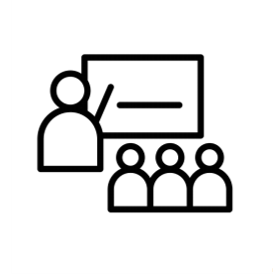: Collaborative research
: Mind the Five
Protecting the privacy of vulnerable populations in humanitarian contexts
5 PRACTICES
To protect privacy of vulnerable populations in humanitarian contexts

1. Exercise prudence.
Limit the collection of personal information; include only information that is necessary.

2. Protect and secure information from and about migrants.
Pay attention to mitigating risks from both technological and human factors.

3. Provide training.
Ensure that volunteers and staff are aware and trained regarding privacy- and security-related protocols. Empower migrants to be more privacy aware.

4. Share-alike.
Work with collaborators and partners to improve privacy and security practices, based on ongoing evaluation and refinement.

5. Practice non-discrimination.
Provide humanitarian services to everybody, including those who prefer not to share their personal information.

HUMANITARIAN ORGANIZATIONS often focus on helping migrants. However, it is easy to overlook the additional vulnerabilities and unintended risks that the careless collection, storage, and use of personal information about migrants can cause.
The use of information and communication technologies also involves data- and privacy-related risks, as electronic data can be subject to security breakages, leaks, hacks, inadvertent disclosure, and disclosure through legal processes (e.g., subpoenas, court orders).
The inadvertent or malicious exposure of personal data can significantly exacerbate the risks for vulnerable populations. In the case of undocumented migrants, disclosure of sensitive information and documents may expose them to detention, deportation, or violence.
This work is licensed under Creative Commons Attribution, Non-commercial license. ![]()
COLLABORATORS
Ricardo gomez
University of Washington
Information School
sara vannini
Sheffield University
Information School
bryce c newell
University of Oregon
School of Journalism and Communication
DOWNLOADS
more details and related publications
Vannini, S., Gomez, R., & Newell, B. C. (2019). “Mind the Five”: Guidelines for Data Privacy and Security in Humanitarian Work With Undocumented Migrants and Other Vulnerable Populations. Journal of the Association for Information Science and Technology, n/a(n/a). https://doi.org/10.1002/asi.2431
Vannini, S., Gomez, R., & Newell, B. (2019). Documenting the Undocumented: Privacy and Security Guidelines for Humanitarian Work with Irregular Migrants. Proceedings of iConference 2019. (Link)
Vannini, S., Gomez, R., Lopez, D., Mora, S., Morrison, J. C., Tanner, J., Youkhana, L., Vergara, G., & Moreno, M. (2019). Humanitarian Organization Information Practices: procedures and privacy concerns for serving the Undocumented. Proceedings of IFIP WG 9.4 2019. (Link)
Vannini, S., Gomez, R., & Newell, B. (2019). Privacy and Security Guidelines for Humanitarian Work with Undocumented Migrants. Proceedings of ICTD 2019. (paper) (poster)
Newell, B., Vannini, S., Gomez, R., & Nemer, D. (2018). Exacerbating the Vulnerabilities of Undocumented Migrants: The Risks Involved in the Humanitarian Information Activities of Migrant-Aid Organizations. proceedings of iConference 2018.
Newell, B., Gomez, R., & Guajardo, V. (2017). Sensors, Cameras, and the New ‘Normal’ in Clandestine Migration: How Undocumented Migrants Experience Surveillance at the U.S.-Mexico Border, Surveillance and Society, 15(1). (Link)
Newell, B., Gomez, R., & Guajardo, V. (2016). Information Seeking, Technology Use, and Vulnerability among Migrants at the U.S.-Mexico Border, The Information Society, 32(3), 176-191. Routledge. (Link)





